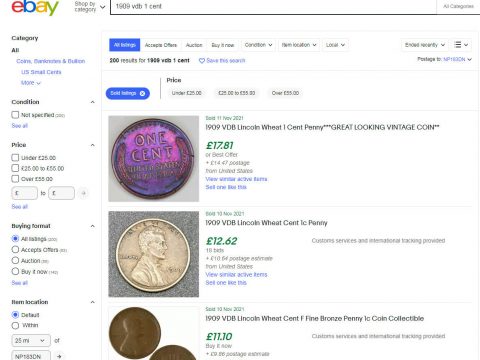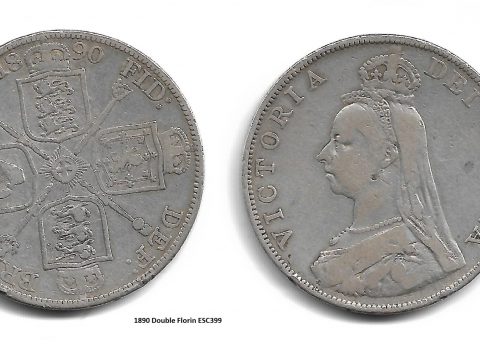Hopefully, this post will give some information on Varieties, Flaws, Errors, and oddities and allow you to make your own decision on if you have something that falls within these categories. It is worth noting that just because a coin falls into one of these categories does not mean that it is instantly valuable. As with everything coin-related it needs a market and/or desirability in order for the coin to be worth anything.
Before we get into the details, it is worth looking at how coins are minted:
The video above is specifically aimed at our US friends but the process is more or less the same where ever the coin is minted. As it is an industrial process it is inevitable that there will be oddities, errors, and plain old damage.
https://www.error-ref.com/ has detailed information on many, many errors and flaws but I would encourage the reader to have a read through the following notes first.
The following notes are my interpritation but based on various information sources, some of which are linked.
PMD – Post Mint Damage
99.9% of the coins with anything different will fall into this category.
I have seen pictures of 100+-year-old coins on Facebook posts with captions like “error coin” or “is this an error?”. The first thing to ask yourself is when I get to 100 years old, will I be blemish-free? It’s the same for the coin, it will pick up scrapes and knocks, be thrust into the hands of people who don’t appreciate the coin for its numismatical value and only see it for what it is, money, cash, currency, moolah… Then there are those psychopaths that like to deface, score, cut up, and commit many other horrendous and harmful acts to coins… That’s not to say a 10 or even 5-year-old coin will not show the same sort of issues though.
Even new coins can display dings and scratches. This is due to the way the coins are minted. Prior to minting the planchets are stamped out of the relevant material and put into a container, during this process the coins will come into contact with each other. Then they will be tipped into the hopper feeding the machines that create the reeds and/or the raised edges of the coin, more opportunity to pick up a scratch or ding and again when they fall into the collection container. From there they are fed into another hopper and, you guessed it, even more opportunity to pick up dings, etc… I won’t say that the actual stamping of the coin, which by its nature is moving material to create the design, won’t improve the coin, there is still the possibility that if the coin has some damage at this point in the process, that damage may still be there. Once minted the coins are again subjected to being in close proximity to other coins and the possibility of picking up dings, scrapes, etc
Then there is the big bad wide world that the coin has to be used in. Chucked into someone’s pocket, next to a set of keys, other change, in and out of vending machines, uses here there and everywhere, dropped on the ground, picked up, spent, cashed in to the bank, and repeated. This will cause damage to the coin.
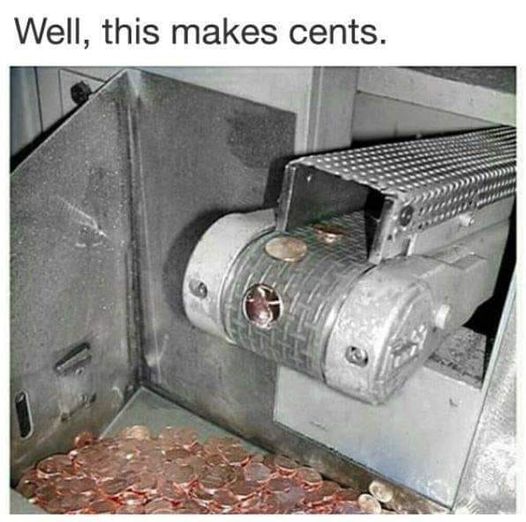
Varieties
Varieties for some these are ignored for some this is their coin collecting life, I certainly like looking for varieties in my coins.
I describe a variety as:
- A distinctive version of a coin that has intentionally been designed or the original design has been altered.
- Where different dies were in use for that year and were mixed (e.g. mule)
- Where a repair was made that results in multiple coins being produced with that repair evident
- Where a mint error results in more than one or two coins being producted with that error
The UK pre-decimal era is littered with examples of varieties, such as the 1902 One Penny High and Low Tide, the 1915 recessed ear, the 1940 double exergue line, the calm and rough seas on certain Half Pennies, and many many others. Some of these varieties are scarcer than others and do command a premium, especially in the higher grades.

For US coins, Variety Vista has a wealth of information on varieties, and whilst I am no expert there are things like wide dates, small dates, close AM, and wide AM to name a few. For me, these are varieties under my own definition
The PCGS deals with the problem of minor varieties on this page. If you read one link from this page, make it this one.
Repunching: As dies wore out they needed to be repaired. In a lot of instances, this has resulted in re-punched letters and digits that were wrong. This was very prevalent in the UK’s early 1860s bronze coinage. At this time it is reckoned that a die would only last a few tens of thousands of coins before needing some type of repair. From a variety spotting point of view, 1860 is a prime year with many tens of varieties known.

In the US, RPMs are also a thing. RPM being Repunched Mintmark. The 1910 S over S one cent for instance. PGCS has information on this as well as images that can assist with identification.
Mules: A mule is where the mint have used two dies that were not meant to be used together resulting. In the UK this is common where new designs were being introduced, as an example, UK Penny in 1913 began with 1+A and finished with 2+B In between, probably by mistake, a few 1+Bs and 2+As slipped through [link].
Doubled dies: They are created when the hub, which imparts a design onto a coin die, impresses the image twice and at two slightly different and offset angles or positions. As many coins will be made with this die, I see this as a variety rather than an error or a flaw See Below for Machine Doubling.
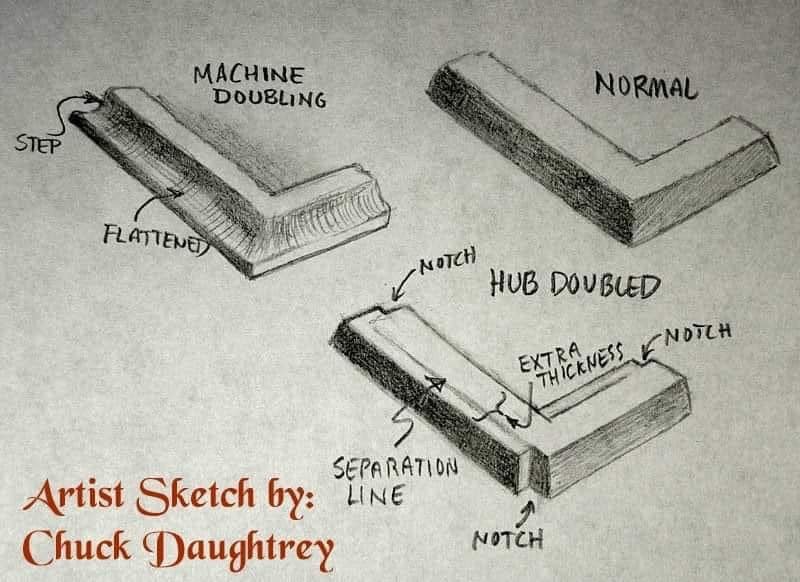
Note: I have referred to this website for information on Doubled Dies. Please visit and read their information on this subject
I have not spoken about major and minor varieties as it is only the major varieties that tend to attract a following and as such a demand for the coins. This will be the subject of a further blog post.
Flaws
To me, a flaw is something that has happened during the minting/striking process rather than as a result of a specific human action. With a die being used for several tens of thousands of coins it is inevitable that there will be some flaws, especially when the die wears out.
Die Crack: A die crack is where a die is starting to deteriorate, metal fatigue, and will give a raised line or lines on the coin where the crack is on the die.
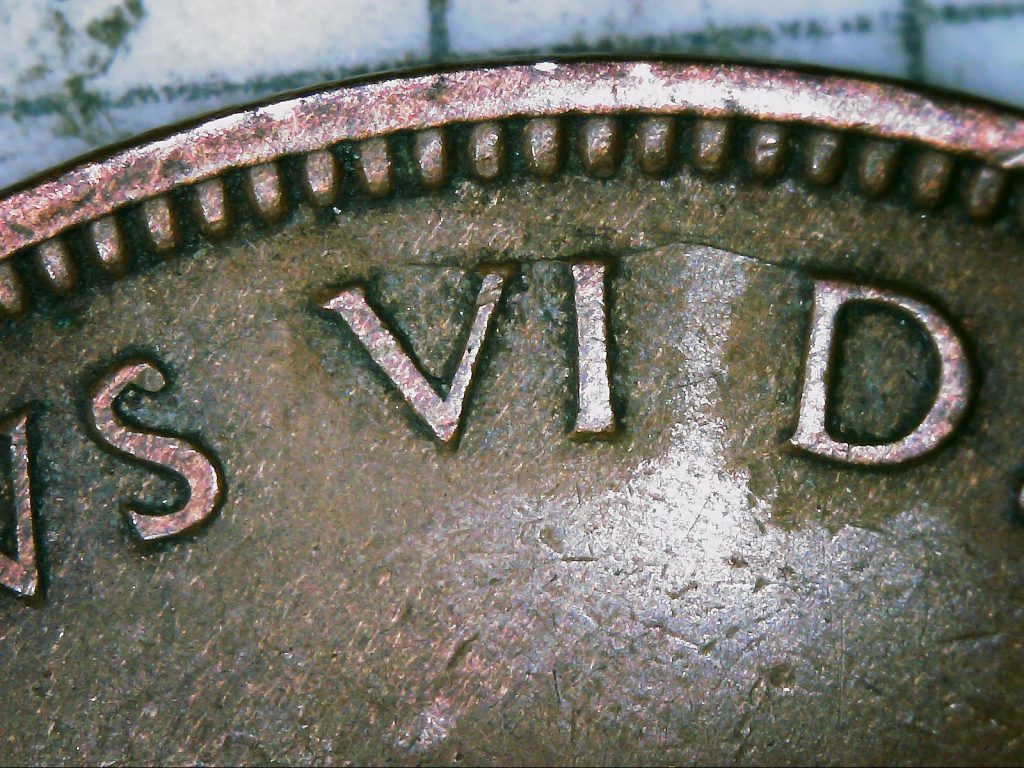
Grease Strike/Weak Strike: The process of striking a coin uses mechanical machinery so it is inevitable that some grease will be used somewhere. For a Grease strike, I can only think that some of this grease has made its way onto the die and has not been removed from wherever it is hiding on the die. This gives us a flaw where parts of the design are weekly struck or even non-existent as grease is not compressible
Machine Doubling: While doubled dies are caused by doubling of the design on the die itself, machine doubling is often caused by an aging die reverberating or shifting during the strike, hitting the coin twice. Also, refer to the image under Double Die.
Note: I have referred to this website for information on Machine Doubling. Please visit and read their information on this subject
Errors
My definition of an error is something that has happened during the minting process that only affects a single coin at a time. Whereas a flaw or variety will affect multiple coins.
Off-Center Strike: The first of the Errors in this list occur when the planchet is not positioned in exactly the right position causing the die to strike off its center. There are varying degrees of off-center with some showing
Curved Clipped/Incomplete Planchet: An interesting error that occurs prior to minting. One of the first stages of coin production is the preparation of the planchet. Each planchet is stamped out of a long sheet of the material the coin is to be made from (see the above video, around 44 seconds in). An incomplete planchet is made when the material has not advanced as far as it should have before being stamped.
With a Curved Clip/Incomplete Planchet you may also see something called the Blakesley effect, This is in essence where the material “oozes” into the space where the planchet is clipped, giving a week strike, if the planchet had been whole, the act of striking the coin would have pushed this material into the design.

There are many other types of errors and I will add them here as time permits so please check back.

